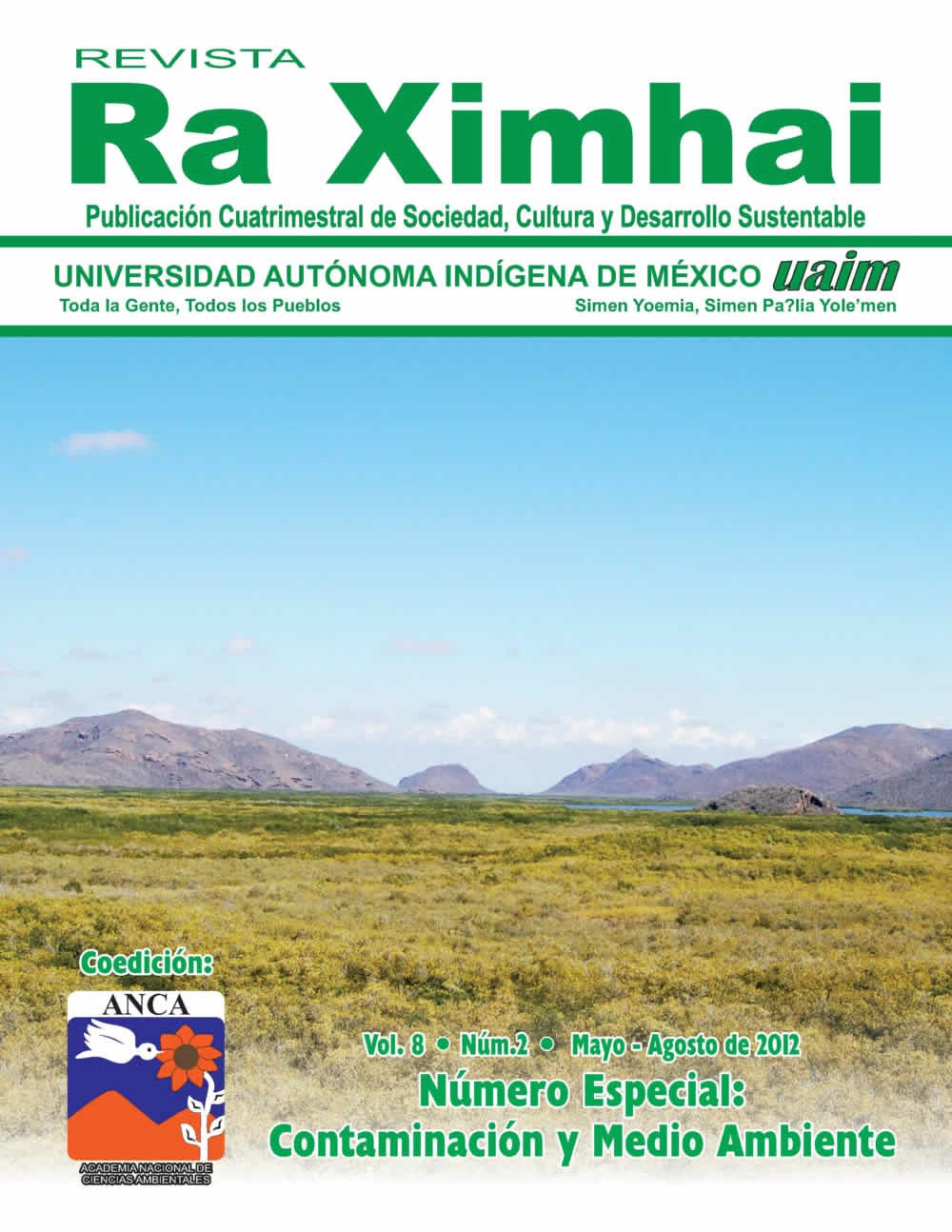Preparation of a preliminary list of sites potentially contaminated with lead (pb) in the State of Tlaxcala
DOI:
https://doi.org/10.35197/rx.08.02.e.2012.16.jsKeywords:
contamination, Tlaxcala, ledAbstract
In this work, a list of sites potentially contaminated with lead in the state of Tlaxcala was prepared, which may represent a danger to the health of nearby populations and to the environment. To do so, the PAHO/WHO methodology was used, which proposes the preparation of a list of contaminated sites as a first phase and which allows identifying as dangerous those places that normally go unnoticed as such. In general terms, the results indicate that in the state of Tlaxcala there are sites potentially contaminated with lead since in these places it is used in their micro-industrial and/or artisanal processes. According to the criteria used in this work, there are five sites that deserve greater attention and are from highest to lowest risk: San Pablo del Monte, La Trinidad Tenexyecac, Tetla de la Solidaridad, Xalostoc and Santiago Xochimilco. In addition, lead, due to its toxic characteristics, proves to be a factor that increases the importance of this study and therefore deserves to be the subject of further study taking into account other factors in subsequent studies, based on the methodology of risk assessment to health due to exposure to potentially contaminated sites.
Downloads
References
ATSDR (1992). Health assessment guidance manual. Michigan. Agency for Toxic Substances and Disease Registry, US Department of Health & Human Services, Lewis Publishers.
ATSDR (1999). ToxFAQs for Lead. Agency for Toxic Substances and Disease Registry. Disponible en línea en http://www.atsdr.cdc. gov/tfacts13.html.
Díaz-Barriga F (1991). Health assessments in Latin America: Usefulness of the ATSDR guidance manual. En: Andrews JS, Frumkin H, Johnson BL, Mehlman MA, Xintaras Ch, Bucsela JA, Eds. Hazardous waste and public health. International Congress on the Health Effects of Hazardous Waste. Nueva Jersey: Princeton Sci Publ: 201-203.
Díaz-Barriga F (1996). Los residuos peligrosos en México. Evaluación del riesgo para la salud. Salud Publica Mex 38, 280- 291.
Díaz-Barriga F (1999). Metodología de identificación y evaluación de riesgos para la salud en sitios contaminados. Centro Panamericano de Ingeniería Sanitaria y Ciencias del Ambiente División de Salud y Ambiente, Organización Panamericana de la Salud, Oficina Sanitaria Panamericana
- Oficina Regional de la Organización Mundial de la Salud. Auspiciado por: Agencia Alemana de Cooperación Técnica, GTZ. Lima, 93 pp.
Díaz-Barriga F, Flores L, Calderón J (1995). A new approach for the study of hazardous waste sites in Mexico. International Congress on Hazardous Waste: Impact on Human and Ecological Health Atlanta, EUA.
Elaboración de un listado preliminar de sitios potencialmente contaminados con plomo (pb)
en el estado de Tlaxcala
Gristo P. y Salvarrey A. (2006). Guía para la Identificación y Evaluación Preliminar de Sitios Potencialmente Contaminados. Proyecto Plan Nacional de Implementación Convenio de Estocolmo. 2a Edición, Dirección Nacional de Medio Ambiente, Uruguay. pp. 31.
National Research Council (1991). Environmental epidemiology, public health and hazardous wastes. Washington, D.C.: National Academy Press: 282.
Zempoalteca S. 2007. Padrón de sitios potencialmente peligrosos por contaminación ambiental dentro de la jurisdicción tres del sector salud en el estado de Tlaxcala. Tesis Licenciatura. Facultad de Agrobiología, Universidad Autónoma de Tlaxcala. 112 pp.
Downloads
Published
How to Cite
Issue
Section
License
Copyright (c) 2012 Juana Sánchez Alarcón, José Luis Gómez Olivares, Stefan M. Waliszewki, José M.R. Montiel González, Rafael Valencia Quintana

This work is licensed under a Creative Commons Attribution-NonCommercial 4.0 International License.
Usted es libre de:
- Compartir — copiar y redistribuir el material en cualquier medio o formato
- Adaptar — remezclar, transformar y construir a partir del material
- La licenciante no puede revocar estas libertades en tanto usted siga los términos de la licencia
Bajo los siguientes términos:
- Atribución — Usted debe dar crédito de manera adecuada , brindar un enlace a la licencia, e indicar si se han realizado cambios . Puede hacerlo en cualquier forma razonable, pero no de forma tal que sugiera que usted o su uso tienen el apoyo de la licenciante.
- NoComercial — Usted no puede hacer uso del material con propósitos comerciales .
- No hay restricciones adicionales — No puede aplicar términos legales ni medidas tecnológicas que restrinjan legalmente a otras a hacer cualquier uso permitido por la licencia.








